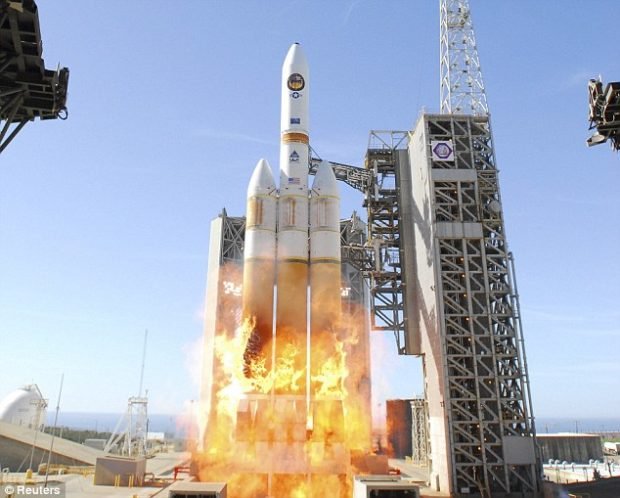NOAA’s JPSS-1 finally launches
NASA launched a United Launch Alliance (ULA) Delta II rocket with NOAA’s JPSS-1 satellite early Saturday morning after three previous launch attempts had been scrubbed.
“Launching JPSS-1 underscores NOAA’s commitment to putting the best possible satellites into orbit, giving our forecasters — and the public — greater confidence in weather forecasts up to seven days in advance, including the potential for severe, or impactful weather,” said Stephen Volz, director of NOAA’s Satellite and Information Service.
The rocket left its pad at Vandenburg Air Force base at 1:47 a.m. PST and successfully delivered JPSS-1, a weather satellite, into polar orbit. JPSS-1 is part of an orbiting constellation that will monitor weather conditions, improve forecasting and surveil major storm damage across the Earth using cameras and sensors. The JPSS missions are expected to vastly improve 3-7 day forecasts.
“Emergency managers increasingly rely on our forecasts to make critical decisions and take appropriate action before a storm hits,” said Louis W. Uccellini, director of NOAA’s National Weather Service. “Polar satellite observations not only help us monitor and collect information about current weather systems, but they provide data to feed into our weather forecast models.”
Launch through MECO (main engine cut-off) and first stage separation
The Delta II rocket can be configured with a variable number of Alliance Techsystems (ATK) graphite-epoxy solid rocket boosters. The JPSS-1 vehicle has the maximum nine boosters, only six of which will be ignited at launch (ground lit.) These will burn out and be discarded early in the flight while the remaining three SRB’s, which have nozzles optimized for high-altitude as they operate mostly in a near-vacuum during the flight profile, are ignited during flight (air lit) and continue accelerating the rocket. The first stage main engine is a Rocketdyne RS-27 Rp-1/LOX fuel combination (highly refined kerosene and liquid oxygen.) The second stage, responsible for delivering the payload to its separation orbit, is an Aerojet AJ10-118k restartable engine fueled by hypergolic Aerozine-50 and Dinitrogen tetroxide (N2O4.)
JPSS-1 Satellite Deployment
After two second-stage engine burns and coast phases, the JPSS-1 weather satellite is deployed into orbit.




